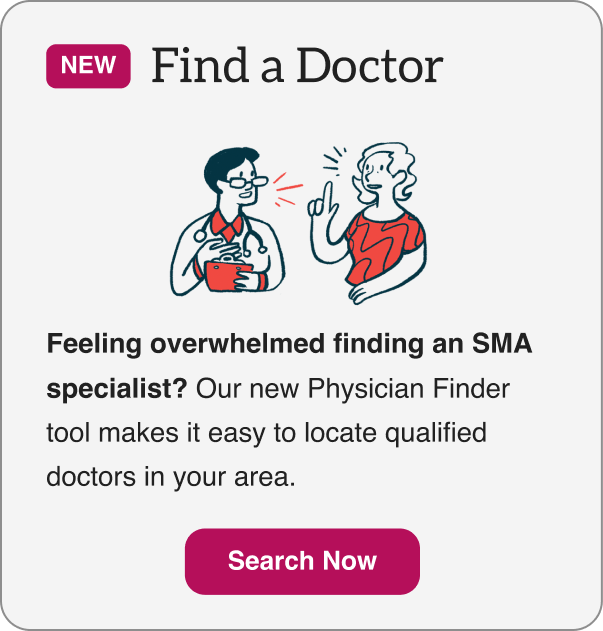SMA travel tips
Last updated Nov. 14, 2025, by Susie Strachan

Traveling with spinal muscular atrophy (SMA) — whether for vacation, work, SMA-related, or to be with family and friends — can require extra preparation.
But with thoughtful planning and the right strategies and resources, it can become manageable and rewarding.
Symptoms such as muscle weakness, respiratory difficulties, and fatigue can affect your mobility and stamina even more than usual when you’re traveling.
By researching accessible destinations and accommodations, packing with care, and looking after your physical and mental health, you can travel with confidence.
Planning ahead
Careful planning can help make traveling easier when you’re living with SMA.
Before leaving on your trip, talk to your healthcare provider about how to manage your condition while on the road. Your discussion might include:
- requesting a written summary of your medical needs, including medications and assistive devices, to share with healthcare providers
- getting copies of your medical records
- checking if you need to adjust medication schedules to accommodate different time zones or travel activities
- discussing strategies for managing fatigue, such as pacing yourself or scheduling regular rest breaks
- asking for hospital or medical center recommendations at your destination, in case of an emergency
Research accessible travel options
Research destinations, tours, accommodations, and transportation options to find ones that meet your accessibility needs.
Try to learn as much as you can ahead of time — such as airlines that are better at offering assistance, hotel rooms with features such as roll-in showers and wide doorways, and destinations that have navigable streets and accessible walkways and restaurants. Such prep work can be especially helpful when traveling internationally, especially if visiting older cities.
Travel accessibility resources include websites such as Wheelchair Travel and Wheel the World, and platforms like AccessNow.
SMA News Today has articles and columns about living with SMA, including on travel.
You might also want to:
- Research the climate at your destination, particularly for things like high altitudes or extreme temperatures that may affect SMA symptoms.
- Vet the accessibility of places of interest you’ll be visiting, from museums to conference centers to sports venues, and determine how much physical exertion might be required to get around.
- Look into service providers that offer assistive equipment and wheelchair-friendly transport.
- Ask in support groups in the area you’re visiting if anyone has suggestions for healthcare providers who are familiar with SMA.
Cure SMA has a travel support package that includes recommended assistive equipment. It is designed to help adults with SMA travel more safely and comfortably, and better manage air travel.
Coordinate special assistance
Contact the airline, train, or cruise line you’re using directly for more information about the assistance they can offer you. Always reconfirm arrangements before departure.
Major tourist attractions and airports list accessibility services on their websites that can support travel with SMA, including wheelchairs, scooters, or other mobility equipment available for rent.
When flying, request assistance with going through security, as well as boarding and deplaning.
Mobility aid rental companies and travel services that can address SMA travel accommodations may also know about available special assistance. Tour companies may have local guides who have had clients with specific medical needs.
Reach out to the place where you are staying to ask about reserving specialized aids, such as adjustable beds or showers, in advance. If you are renting equipment, request assistance with delivery and setup in your room.
Packing for travel with SMA
When preparing for your trip, make a list of essential medical equipment, such as mobility aids, ventilators, and breathing devices, as well as comfort items that can help you feel more at ease during your trip.
To safeguard specialized equipment like power wheelchairs or ventilators, speak with your airline, train, or cruise provider ahead of time and follow their packing directions.
Bring essential equipment
When traveling with specialized equipment for SMA, first check that all your devices are in good working order before departure.
Each airline has its own procedures for handling mobility aids. Contact your airline in advance to confirm its policies, including how the staff manages power wheelchairs in cargo and what protections are in place for damage prevention.
Websites like BraunAbility and WheelchairTraveling offer tips and insights for air travel with mobility aids, including what to do if an airline breaks your wheelchair.
Other assistive devices may also require special handling during your travels.
- Car beds for reclining or lying flat should be properly secured in the vehicle.
- Seating aids for eating or showering should be packed to prevent damage.
- Breathing aids such as BiPaP or cough assist machines should be packed in a hard case, along with items like adapters.
- Orthopedic braces for support and alignment should be properly fitted for comfort on long trips.
Pack a list of emergency contacts that includes your healthcare provider’s details, as well as necessary information for close family members. Your list should also note resources at your travel destination, such as nearby hospitals or clinics familiar with SMA.
Pack smart
Make a second checklist with core essentials that can make your trip more comfortable. For example, pack supportive cushions to help reduce the risk of pressure sores and minimize discomfort on long trips. If you have room, consider bringing a few extras, as it’s easy to lose things when traveling.
Streamline clothing choices by planning your outfits as you pack. Pick items that aren’t hard to take on and off. And choose clothing that can be layered so it’s easy to adapt to different climates or to air conditioning.
Whether traveling by plane, train, or car, pack all essentials in one bag so everything is easy to find. If you are flying, double-check that your carry-on has enough of what you need in case of a delay or misplaced luggage.
Managing accessibility challenges during travel
Travel comes with its share of obstacles, such as busy airports or train stations. Also, not all hotels offer accessible rooms that allow people with medical conditions to stay safely and comfortably. But some strategies can help when you encounter difficulties.
Start by researching your destination’s disability rights and accessibility laws. Knowing these laws can empower you to advocate for yourself in case of an issue with your transportation or accommodations.
Don’t hesitate to speak up. Explain the specific assistance you require. Many businesses will try to make adjustments when they know what you need.
It’s helpful to have a backup plan in case an expected service or accommodation is unavailable or inadequate.
Navigating airports, stations, and terminals
Maneuvering through busy transportation hubs can be a challenge for people with mobility issues. Crowded spaces, long distances between gates, hard-to-find alternatives to stairs or escalators, and long lines can all make muscle fatigue worse.
To help navigate these and similar issues in advance, contact the transportation provider for assistance with your mobility needs, such as wheelchair assistance or special seating.
At airports, look for dedicated accessible entrances or call ahead to arrange help. Don’t hesitate to ask for assistance from staff at check-in, security, or boarding areas.
Allow extra time to move through security and get to your gate, and check to make sure any necessary equipment is ready for use during transit.
Hotel and accommodation considerations
A few days before you arrive, call the hotel directly to confirm that your room is equipped with your requested accessibility features, such as accessible bathrooms that have curbless showers with handheld shower heads and grab bars.
Think about other factors that can further increase your comfort and convenience during your stay. For example, check that there is enough space in the room for you to maneuver freely in a power wheelchair, and that the room has accessible power outlets for other essential equipment, such as a ventilator.
Health and safety while traveling
To plan for your safety and well-being when traveling, make sure you have enough medication and follow your care plan.
Remember to take regular breaks to prevent fatigue, as it can worsen muscle weakness and impair your mobility.
Prepare for unexpected situations by having a plan for emergency healthcare.
- Locate healthcare facilities and services at your destination and learn if any have experience in treating SMA.
- Check with your health insurance provider to see which healthcare facilities accept your insurance and whether you need additional travel insurance.
Maintain your medications and make a care plan
Maintaining your SMA treatment plan while traveling not only means packing your medications but also making sure you bring your prescriptions and medical records.
To protect oral medications while traveling, especially from heat, keep them in their original package in your carry-on bag.
Your medication should be clearly labeled. Consider bringing a prescription or a doctor’s note with you, especially if traveling internationally. Carrying this documentation can help prevent delays or misunderstandings at security or customs checkpoints.
Other tips for traveling with SMA include:
- making sure you have enough medication for the length of your trip
- creating an emergency plan that outlines steps in case of a severe SMA-related issue, such as respiratory distress
- wearing a MedicAlert ID bracelet or necklace to help communicate your condition in an emergency, especially if you’re having trouble speaking
It can be helpful to learn SMA-related phrases before traveling internationally to a non-English-speaking destination. Use a translation app or record key phrases to make communication with healthcare providers easier.
When traveling with family or friends, let them know about the challenges you might experience, such as mobility issues, breathing difficulties, and fatigue. Discuss how they can provide support, from assisting with movement and managing respiratory needs to offering help when you’re feeling tired or fatigued.
Stay comfortable and energized
To help maintain your physical comfort and stamina during travel, plan how to manage SMA symptoms like muscle weakness, respiratory difficulties, or issues with swallowing.
For example, navigating crowded or uneven terrain is more difficult when muscle weakness causes mobility issues. Similarly, breathing difficulties can be intensified by environmental factors such as changes in air pressure or temperature.
Schedule rest stops to stretch or reposition to prevent stiffness and fatigue. Long flights or drives can be tiring, so try stretching in place.
Gentle physical activity, like yoga or swimming, can improve circulation and help reduce fatigue. Many yoga exercises can be adapted to different environments, making them easy to practice anywhere. Check your destination for a swimming pool that has adapted equipment, such as a Hoyer lift.
If you are having swallowing issues, stay hydrated and eat frequent, small meals. Avoiding big or hard-to-swallow foods can reduce the risk of choking.
When eating out, ask for dishes that are soft, finely chopped, or pureed.
Adaptive travel activities
Many destinations offer inclusive tours and accessible activities designed for people living with SMA and their families.
For example, there are group tours and cruise ships that welcome travelers with limited mobility. Destinations for such tours include places like museums, wildlife reserves, and aquariums that feature wheelchair-friendly facilities as part of their offerings.
Many cruise lines are suitable for travelers with mobility challenges, as ships typically feature accessible staterooms, wide doorways, roll-in showers, and support services like boarding assistance and wheelchair accessibility throughout the venues.
For group tours, look for companies that offer accessible travel experiences. These tours may include options for shorter walking distances, wheelchair-friendly transport, and destinations with minimal terrain challenges.
Some federal and state parks provide adaptive equipment like beach wheelchairs or all-terrain wheelchairs, and adaptive bikes for backwoods and rugged paths.
For water-based activities, look for locations with accessible docks or floating piers that allow safe entry into boats. Some parks offer guided walks and nature programs that support people with mobility needs.
To learn more, search online for accessible travel activities or talk with others who have mobility and medical challenges about their travel experiences. People in SMA support groups can provide firsthand recommendations and share their experiences, helping you plan your trip.
Mental health and travel
Stress, anxiety, and changes in your routine can take a toll, so practicing self-care is key to maintaining healthy emotional resilience while traveling.
Sticking to familiar routines can provide you with a sense of control and stability. Following your medication schedule, using adaptive equipment, and carving out time each day to relax are some ways to address travel-related SMA fatigue.
Create relaxing moments while on the road by:
- practicing deep breathing or relaxation techniques to alleviate stress
- pacing yourself throughout the day by planning shorter activities
- setting aside time to recharge in between sightseeing, meetings, or field trip activities
- finding ways to unwind by looking for quiet spaces, listening to music, reading a book, or watching a movie
SMA News Today is strictly a news and information website about the disease. It does not provide medical advice, diagnosis, or treatment. This content is not intended to be a substitute for professional medical advice, diagnosis, or treatment. Always seek the advice of your physician or other qualified health provider with any questions you may have regarding a medical condition. Never disregard professional medical advice or delay in seeking it because of something you have read on this website.
Recent Posts







